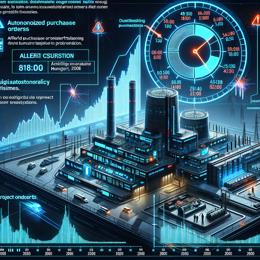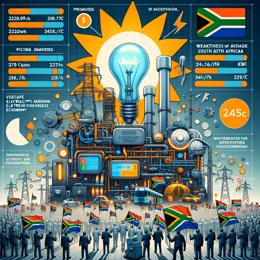Image created by AI
Eskom's New Tariff Plan Could Mean Higher Costs for Solar Users
South Africa's energy landscape is on the brink of significant change as Eskom takes steps to revise its retail electricity tariffs through its Retail Tariff Plan 2025 (RTP 2025). The National Energy Regulator of South Africa’s (Nersa) Electricity Subcommittee (ELS) has given a preliminary nod, with some reservations, to the amendments proposed by the state-owned power utility. The proposed revisions are particularly critical for those with grid-tied solar installations.
In an exclusive interview, Chris Yelland, a prominent energy sector analyst, revealed that Eskom’s RTP 2025 emphasized restructuring the balance between fixed and variable charges. Central to the modifications is the introduction of a Generation Capacity Charge (GCC) which is set to reshape the pricing model by increasing fixed costs associated with maintaining a grid connection.
Originally, Eskom suggested a GCC of R5.99 per point of delivery per day, which would have hiked the monthly charges for a household with a single point of delivery to about R182. However, following recommendations from the ELS, the phased introduction of the GCC will start at a much lower rate of R1.20 per point of delivery per day in 2025, translating to around R36 monthly, considerably softening the financial impact on consumers in the initial stages.
Eskom justifies the GCC by arguing that grid-tied solar users, who typically draw less power from the grid, disproportionately benefit during lower solar production periods by using the grid akin to a 'battery'. This situation purportedly results in higher costs being unfairly shouldered by larger electricity consumers.
If Nersa’s board approves these recommendations, users will see an increment in fixed charges but at a greatly moderated rate than initially proposed. The utility’s broader strategic objective includes the implementation of a simplified tariff structure encompassing energy, network demand, and service charges, thereby standardizing costs associated with grid maintenance and operations.
Moreover, Eskom’s online comparison tool illustrates potential shifts in consumer electricity bills with these amendments, highlighting both increases for low usage households and decreases for heavy consumption users. This change reflects Eskom's ongoing efforts to equitably distribute network costs amongst its users, regardless of their consumption patterns.
As these recommendations await final approval, stakeholders from across the spectrum are keenly watching the developments. The outcome will not only affect residential consumers but also set precedents for how renewable energy integrations are financially managed in South Africa's evolving energy economy.










